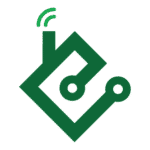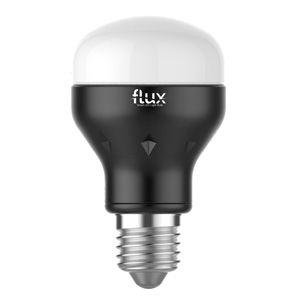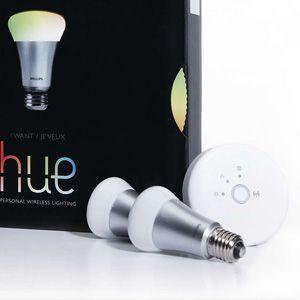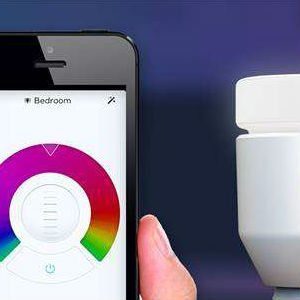
Wifi Lighting
Find and compare the top Wifi Light Control Solutions. Free guide to remotely control your home and outdoor lighting from your iPhone and Android device.
The following Channel Guide will help you:
- Filter bulb based on useage type – Outdoor/Garden, Aquarium, LED Color Strip, etc
- Get app reviews, and see if the bulb or socket can work with your Android or iOS phone, or existing home automation platform.
- Filter based on price, monthly fees, or home hub requirements and integration’s.
There are two types of Wi-Fi Lighting you might be looking for:
- IP enabled lights that you can monitor, manage and control from any internet-enabled device. (Android@home, etc)
- LED lights that are able to send data using Visible Light Communications (VLC) technology.
In this resource article we will cover both types of wireless light bulbs.
12/19/2019
Wifi and Bluetooth Smarth Bulbs
Flux Bluetooth Bulb
Highlights
- Music sync and custom mode and scenes
- Bluetooth Connectivity
- Comes with 20 preset modes like cross fades, strobes etc.
Phillips Hue
Highlights
- Light schedules
- Apple HomeKit compatible
- Requires Bridge -- Philips Hue system supports up to 50 Philips Hue lights, luminaires, switches and other accessories.
Additional
- GE Link (Wink Hub)
- MagicLight $33.95
- WeMo Smart LED (WeMo Link Hub)
- Cree Connected Bulb (Wink, SmartThings, WeMo Link or any other ZigBee Certified hub)
Visible Light Communications
 Image: Bytelight
Image: Bytelight
Visible frequencies generated by LED lights are being touted by researchers (See the history of the idea below) as a way to transmit data and supplement our exisiting information networks. Fluctuations of a bulb in a pattern that are imperceptible to the human eye, can be used to generate data transmission at average speeds of 10 megabits per second (and have been shown capable of reaching 100-500 Mbps).
Applications of the technology have the most potential where wireless transmissions cannot currently be used. Immediate benefits could be seen in hospitals, airplanes, hazardous environments, underwater operations, and in the military where the use of the light would enable activity that does not compromise safety and security standards.
The technology is also shown to be applicable for indoor GPS and in car-to-car communication from headlights and street lights to manage traffic flows and overt accidents.
A potential downside to this technology is its need to have line-of-site visiblity in order to work. This restriction can be reframed as a security benefit as the data cannot breach walls like typical Wi-Fi can.
Harald Haas, one of the professors working on this technology, gave a presentation at TEDGlobal in July 2011 talking about potential uses and demonstrating the technology sending video.
Thinking of outfitting your own home with these data lightbulbs? Advances will need to be made in Power Line Communications (PLC) technology in order to enable you to use existing home power lighting cables to carry the data. There will also need to be advances in the capacity to upload data through that same connection.
Regulations:
In most cases VLC is subject to regulation by a noncommunication standards (Ex: eye-safety standard, illumination regulation, automotive standards in the case of traffic signals). This presents challenges working across regulatory bodies and frameworks which most other communication standards do not have to do.
Line-of-site Limitations
Since this is a requirement it brings with it certain benefits (mainly security) and restraints like having interferance from atmospheric conditions like fog, rain, etc.
Speed Limitations:
The data transfer rate for LED transceivers is limited to 622 Mbit/s. Due to the characteristic switch hysteresis.
Companies in the industry:
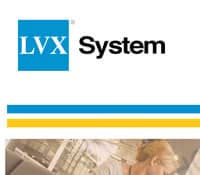 |
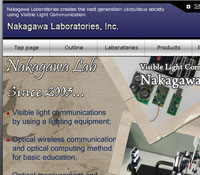 |
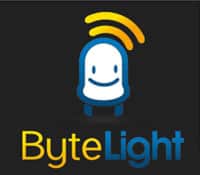 |
| LVX System | Nakagawa Laboratories | ByteLight |
Northumbria University, Fraunhofer Heinrich Hertz Institute for Telecommunications, Siemens AG, Boston University, University of California.
History:
This concept of Visible Light Communications dates back to 1880 in connection to Alexander Graham Bell. Here is a brief history that begins with Bell's idea and follows through to the most recent discoveries and innovations.
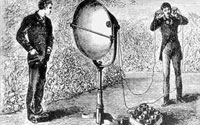 |
1880: The first VLC transmission (which was also the first wireless transmission in the world) was sent in Washington D.C. on 3 June 1880 by Dr. Alexander Graham Bell and his assistant Charles Sumner Tainter. They used a system they called the Photophone which transmitted speech on modulated sunlight over several hundred meters. This demonstration pre-dates the transmission of speech via radio and Bell is said to have stated it was his greatest achievement, surpassing even the telephone in terms of importance. |
| 1931: Dr. Sergius P. Grace, of the US Bell Telephone Laboratories, discusses the potential for using light for wireless communications to prevent the danger of eavesdropping by others. | |
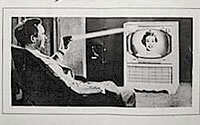 Image Soure: Radio Museum |
1955 The first visible light wireless remote control is made by Zenith and called the Flash-Matic Remote Control. This system used photoelectric cells in the four corners of the screen to control on/off,mute and channel selection. The Flash-matic had problems working well on sunny days, because sunlight often changed the channels at random. One year later, ultrasound technology was used to replace the light system to eliminate this flaw in the operation. |
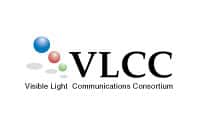 |
2003: The Visible Light Communications Consortium (VLCC) is established between major Japanese companies to develop, plan, research and standardise Japan’s own visible light communication systems. |
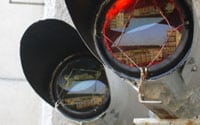 Image Source: Twibright |
2006: RONJA The Reasonable Optical Near Joint Access (RONJA) Free Space Optics device developed in the Czech Republic can transmit data wirelessly using beams of red visible light up to 0.87 miles (1.4 kilometres), or infrared light up to 1.25 miles (0.78 kilometres). |
| 2009: A result of the joint cooperative agreement between VLCC and the IrDA, the VLCC issues their first Specification Standard. | |
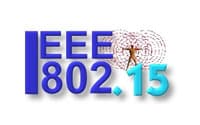 |
2009: IEEE 802.15 TG7 Task Group seven was chartered to write standards for free-space optical communication using visible light. |
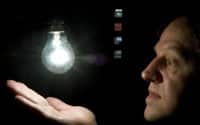 |
2011: 100Mbit/s data rate was achieved from a standard low-cost LED light bulb by researchers on the D-Light project at the University of Edinburgh |
Resources:
If you are interested in learning more about VLC technology and applications below is a list of videos and resources for your viewing pleasure.
- Center for Ubiquitous Communication by Light (UC-Light) at the University of California
- Visible Light Communications Consortium (VLCC)
- IEEE 802.15 WPAN™Task Group 7 (TG7)Visible Light Communication
- OMEGA project - Development of a global standard for ultra-broadband home networks (operating at 1 Gbit/s) LED-powered VLC is the key technology.
- http://visiblelightcomm.com/ good blog on the topic.
- The blog Twilight in the Valley of the Nerds does a good overview and the technology restraints in his article Is Li-Fi the Next Wi-Fi?
VLC Videos:
- LVX System : Customer Video
- Visible Light Communication System : Nakagawa's Group
- TED: Harald Haas: Wireless data from every light bulb
- Imagine: Internet access from a LED
- OMEGA optical wireless prototypes
In the Media:
New Scientist: Will Li-Fi be the new Wi-Fi?
NYTimes: Using Light to Send Data Across the Room
The Engineer: Light reading: visible light communications
Good: Forget WiFi, Connect to the Internet Through Lightbulbs
MIT Sloan: Harald Haas’s Li-Fi Vision: Light Bulbs That Transmit Data
EE Times: Visible light illuminates a new approach for wireless comms
Ambient data lighting displays
Light is a very powerful means of transmitting information. The fastest fibre-optic cables science has developed can handle more than 100 terabits of data per second (at least in the lab). But for humans, interpreting even small amounts of data can be overwhelming. Luckily, we can build devices that use light to represent the data in a simpler, more intuitive form -- more like a traffic light than a flashing bundle of fibre.
Data-driven lighting can provide feedback and help people change their behavior at just the right time. It’s subtle -- less insistent than a noisy alarm -- but easy to take in at a glance.
Examples
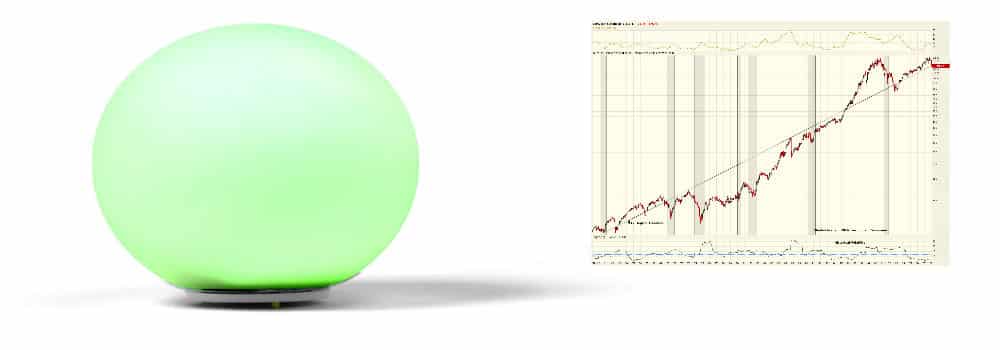
Ambient Orb
One of the first networked devices to hit the consumer market (way back in 2002!) was the Ambient Orb, which glows in a spectrum of colors to represent things like weather forecasts or stock market fluctuations.
The company behind the original Ambient Orb quickly adapted the same technology for use with utility customers in devices that not only glow to reflect hourly fluctuations in the price of energy, but also display details about the home’s energy usage. Utilities that provide the devices to customers have seen reductions in usage when prices were high and lower peak demand.

DontFlushMe
In New York City, the DontFlushMe project (from the maker of open-source Hue competitor Visualight) proposes a light-based system to let residents know not to flush their toilets while the storm drains are overflowing. That could reduce discharges of raw sewage into the harbor.
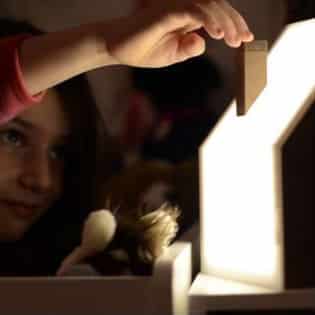
Consumer
GoodNightLamp
"A family of internet connected lamps. When you turn the Big Lamp on, the Little Lamps turn on too! Use it to keep in touch with your family when you live abroad."
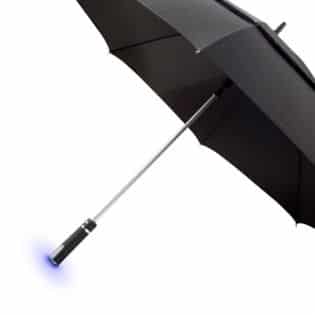
Consumer
Ambient Umbrella
"When the weather forecast shows rain, the umbrella will glow to let you know."
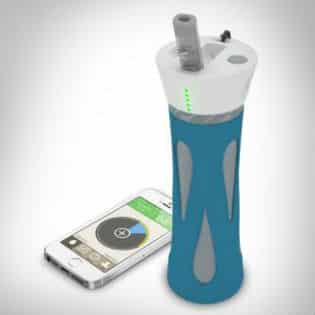
Consumer
Bluefit bottle
"If you start to fall behind with your hydration, BlueFit has customizable sounds and alert lights that sync with your phone's notification system to keep you on track.'

Consumer
Bond Bracelet
"A tiny touch module. If you touch it for 1 second, your friend will get a 1 second tickle. Tickles can be up to 5 seconds long and any colour of the rainbow – the colour just depends on how long you touch it for."
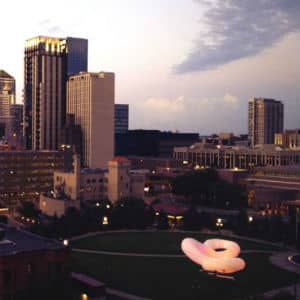
Art
MIMMI
An inflatable sculpture installed in the plaza of the Minneapolis Convention Center that captures and displays information from the activity levels in the surrounding area as well as aggregating the general sentiment of the cities residents using real-time Twitter data.
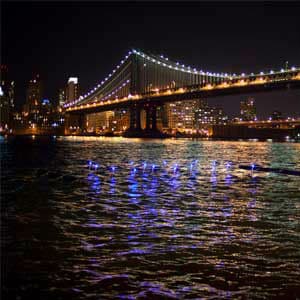
Art
Amphibious Architecture
"The sensors monitor water quality, the fish presence, and human interest in the river’s ecosystem, while the lights respond to the sensors, creating feedback loops between humans, fish in their shared environment."
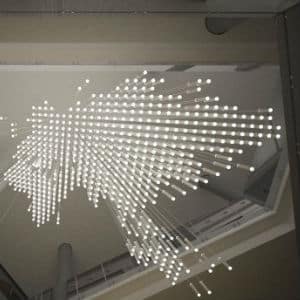
Art
CSIS Data Chandelier
"This map becomes a low-res display for illustrating global data such as GDP growth rate, renewable water resources, and energy consumption."
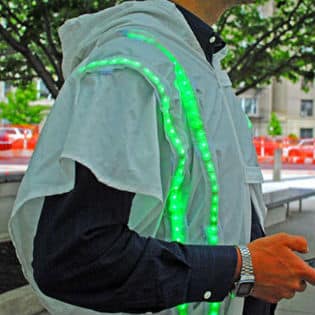
Environment
AirCasting Luminescent Apparel
"AirCasting is a platform for recording, mapping, and sharing health and environmental data. AirCasting Luminescence was developed to communicate sensor measurements and to spark interaction between AirCasters and people located in their immediate vicinity."
DIY Projects and Resources
- RGB LED controller with Bluetooth and Android client application - Robert Mai - hsapps.com
- My Bluetooth Ambient ORB - Anthony Rowe
- Cheerlights
- Bluetooth Weather Lamp - Aaron Jeromin
- Electric Imp WiFi Progress Display - Midnight Maker
- SPOKA Night Light controlled from and Android Phone - trandi
- Minecraft Environmental Lighting Experiment - Taptonics
- Arduino Ambient Orb Weather Predictor - Scott Reston
- DIY Ambient Orb - Nick O'Leary
